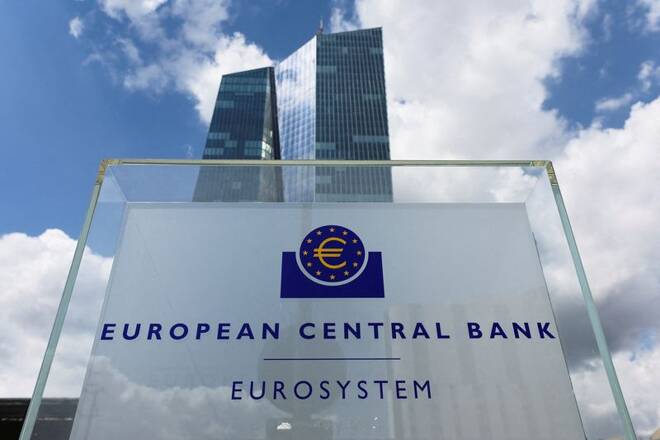Advertisement
Advertisement
Dollar up on euro as quarter ends, commodity led currencies sink
By:
By Kevin Buckland TOKYO (Reuters) - Sterling rose to a fresh one-week high on Friday, helping to push the U.S. dollar index to a one-week low, as British policymakers moved to undo some of the damage caused by last week's tax-slashing, debt-swelling fiscal plan.
By Sinéad Carew
NEW YORK (Reuters) – The dollar rose against the euro on Friday but pared gains late in a session that was muddied by quarter-end trading while riskier commodity-led currencies fell sharply after European inflation hit a record high and U.S. consumer spending increased faster than expected.
But while the dollar index was showing its biggest quarterly gain since the first quarter 2015 it was set for its first weekly decline in three weeks.
Sterling rose against the dollar after falling earlier in the day. The pound last showed four straight sessions of gains followed by wild declines on concerns about Britain’s plan to slash taxes and pay for it with more borrowing.
After hitting a record low on Monday, the British currency was on track for a weekly gain after the Bank of England bought British government bonds, known as gilts, on Wednesday, Thursday and Friday. [GBP/]
Data on Friday showed euro zone inflation zoomed past forecasts to hit 10.0% in September, reinforcing expectations for another jumbo European Central Bank rate hike next month.
The U.S. Commerce Department said the personal consumption expenditures price index (PCE), which the Federal Reserve targets at 2%, rose 6.2% year-on-year in August. This gave the Fed less reason to slow down its rate hiking cycle after raising U.S. borrowing costs faster in 2022 than any time since the 1980s.
“Today’s trading is distorted by quarter-end and month-end order flows,” as investors focused on rebalancing portfolios rather than on data said Paresh Upadhyaya, director of fixed income and currency strategy at Amundi U.S. in Boston.
But the strategist expects to see the dollar continue its upward direction as investors revert to trading on fundaments such afundamentalsamentals end.
“At this point you can’t fight the strong bullish dollar trend since its underpinned by counter cyclical factors such as concerns about global growth, geopolitical risk and rising U.S. interest rates,” Upadhyaya said.
Meanwhile, trading in currencies from countries that are heavily dependent on commodities reacted strongly to the hot inflation data on Friday due to concerns about demand and global economic growth, according to Upadhyaya.
The U.S. dollar was up 1.04% against the Canadian dollar while New Zealand’s kiwi was down 2.24% and the Australian dollar was down 1.62.
The pound, after touching $1.1235, was last up 0.28% on the day at $1.11500.
The euro was down 0.10% at $0.98055. The dollar index, which measures the greenback against a basket of major currencies, was down 0.08% on the day but on track for a quarterly gain of 7.2%.
But on a weekly basis the index was set for its first decline in three, last down 0.899%.
“The inflation data today surprised higher once again. That will keep upward pressure on interest rates and the dollar,” said Adam Button, chief currency analyst at Forexlive, a currency analysis firm in Toronto.
But at the quarter-end Button also said “fundamental considerations often take a back seat.”
Foreign exchange volatility has surged as investors have fretted about inflation and economic growth in the face of aggressive global monetary tightening. Also fraying nerves has been the Britiah mini-budget fallout and concerns about escalation in the Russia-Ukraine war.
In a sign of the rush for the safety of the dollar, demand for the U.S. currency in derivative markets surged on Friday to its highest since the COVID-19 crisis in 2020.
So far this year, the dollar index has soared almost 17%. For the month, the index was on track for a 3.15% gain, its biggest since April.
The dollar was up 0.2% against the yen at 144.765, and has been mostly tracking sideways since early September.
Japan made its first yen buying intervention since 1998 last week to prop up its currency. It spent a record 2.8 trillion yen ($19.7 billion), Ministry of Finance data showed on Friday, draining nearly 15% of funds it has available for intervention.
Elsewhere, China’s yuan recouped come losses from from the previous day’s session after Reuters reported the central bank had told major state-owned banks to be ready to support the currency in offshore trading.
The Swiss franc fell after the Swiss National Bank said it had intervened in the foreign exchange market in the second-quarter to support the currency. The dollar rose 1.05% versus the franc.
(Reporting by Sinéad Carew and Gertrude Chavez-Dreyfuss in New York, Tommy Reggiori Wilkes in London; Additional reporting by Kevin Buckland in Tokyo; Editing by Robert Birsel, Chizu Nomiyama, Alex Richardson and David Gregorio)
About the Author
Reuterscontributor
Reuters, the news and media division of Thomson Reuters, is the world’s largest international multimedia news provider reaching more than one billion people every day. Reuters provides trusted business, financial, national, and international news to professionals via Thomson Reuters desktops, the world's media organizations, and directly to consumers at Reuters.com and via Reuters TV. Learn more about Thomson Reuters products:
Did you find this article useful?
Latest news and analysis
Advertisement
